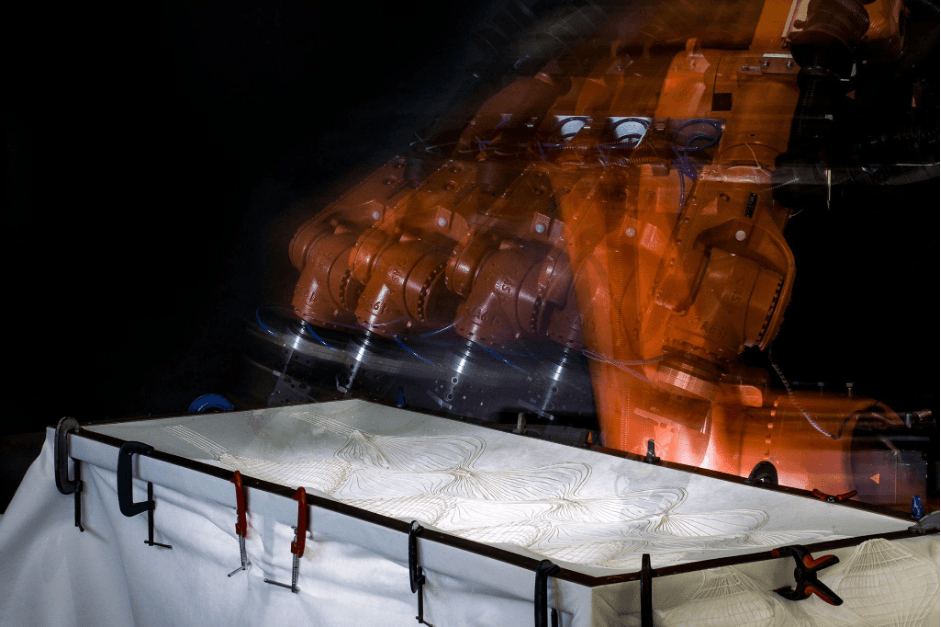After publishing the VOJEXT S+T+ARTS Residencies open call for artists in December 2022, we are happy to share with you the selected artists for the VOJEXT S+T+ARTS residencies. The selected artists were announced during the S+T+ARTS presentations at European Robotic Forum 2023 in Odense (Denmark). Each artist will receive 30.000 Euros of funding, mentoring and access to robotics labs from March until December 2023.
About the residencies
The goals of the VOJEXT S+T+ARTS residencies are twofold: to push for art-driven innovation and societal understanding of human-robot interactions, and to integrate them in industrial manufacturing robotics that work on construction, arts and crafts.
Calin Segal is the selected artist of the challenge Robotics in Arts and Crafts (supported by industrial partner Robotnik), Mariela Papandreou of the challenge Robotics in Arts and Crafts (supported by industrial partner Robotnik), and Anna Schaeffner of Social Robots (supported by industrial partner IIT).
Here is a sneak peek into what the artists are going to experiment with during their residences. The first two are hosted and tech-provided by Robotnik (Spain). The third is hosted and tech-provided by Fondazione Istituto Italiano Di Tecnologica (Italy).
Residence 1: Robotics in Construction (Robotnik)

The first selected artist is Calin Segal and their project ‘Ornate Equations-The Interplay of Structure and Serendipity’. This project aims to explore new ways to create and integrate mosaic into modern building designs. Segal wants to use the power of robotic manufacturing to transform discarded ceramic or stone debris found on demolition sites into intricate mosaic patterns made of complex algorithms. The goal is to create a custom and unique software that generates patterns and can communicate with the existing technology from Robotnik. This approach will be used to decorate tiles or interior surfaces such as walls and floors.
Residence 2: Robotics in Arts and Crafts (Robotnik)

‘Crafting the Unimaginable from Industry Waste’ by Mariela Papandreou aims to advance the production of bespoke artisanal products through the integration of computer vision, robotic manufacturing and artificial intelligence (AI) technology. The project seeks to harness the potential of discarded offcuts from the wood industry, as a way of creating value from otherwise unused materials, thus addressing the issue of waste. The four-step workflow suggests a human-robot collaboration on both the design level, through the dialogue between the designer and text-to-image generators, as well as on the manufacturing level, for the creation and processing of custom stock.
Residence 3: Social Robots (IIT)

Anna Schaeffner’s project ‘Soft Collision’ focuses on the design of a new robotic membrane that will demonstrate a form of interaction between human and robot through body language. The artistic approach consists of experimenting with an active and reactive membrane that deforms through pneumatic, to offer new qualities of behaviour, cognition and functionality to the robot. A digital simulation of the robot and its environment informs the design of the membrane. The digital twin simulates the impact of a close space on the robot´s behaviour to identify potential limitations. The membrane overcomes these limitations by calling on the intelligence of the material through the compliance quality of its deformation.
If you are working in robotic industry and you are interested in working with artists, you can get in touch with us by sending an e-mail to startsresidency ⟨ at ⟩ vojext.eu.
About S+T+ARTS
Science, Technology and the Arts (STARTS for short) is a European Commission initiative that supports the collaboration between the three disciplines.
About VOJEXT
The European VOJEXT project aims at providing a business and technological framework to enable matchmaking and encourage producers and adopters of autonomous systems for human-robot interaction, dynamizing science-driven approaches for the European industry. Within this context, Waag contributes to wider societal and personal perspectives addressing human-machine relations in manufacturing environments.


